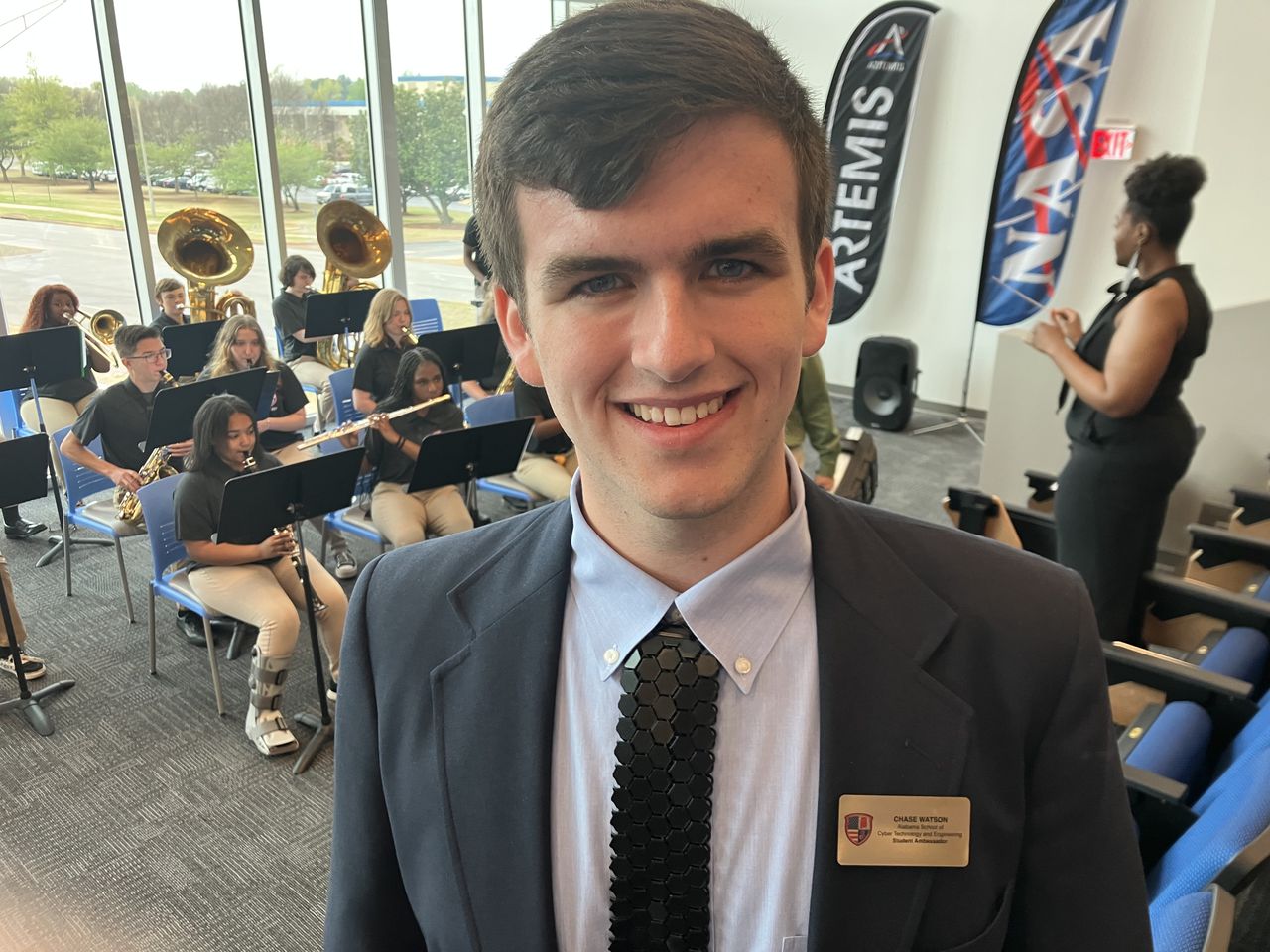Huntsville cyber school student needed a tie fast for a big event, so he 3D-printed one
What do you do when you’re a student ambassador for your boarding school making public remarks at a serious milestone event and you have the blue blazer but don’t have a necktie to wear? Head for the mall, some teens would say.
At the Alabama School of Cyber Technology and Engineering in Huntsville, you’ll summon the tech and 3D-print a tie yourself.
That’s what junior Chase Watson did before representing the student body at a signing ceremony this week marking a formal partnership between the still-new state technical school and nearby NASA Marshall Space Flight Center. The school is open to students from across Alabama.
Watson, 18, of Slapout, near Montgomery, told the audience of students, faculty, political dignitaries and aerospace and defense company representatives that he decided to print the tie himself. They laughed out loud at classic Huntsville-style ingenuity, and Watson wore a big grin showing the tie to a reporter afterward.
From the seats, Watson’s tie looked like any basic dark necktie complementing a blue blazer and light blue button-down shirt. Up close, it is a pattern of small hexagons linked together. Watson said he found the design at thingiverse.com and used the school’s Prusa 3D Printer with the full support of printer room supervisor Daniel Elliott.
Watson was one of the student representatives at the signing ceremony that made the cyber tech and engineering school and NASA’s Marshall Space Flight Center educational partners. Students from the school will be able to learn from a space center where 3D printing is already making rocket parts of the future.
As for his future, Watson is thinking college, mechanical engineering studies and then some kind of job in … 3D printing. He’s followed the recent news about the March 23 launch of the Terran 1 3D printed rocket and 3D printed organs possibly solving the shortage in surgical transplant parts.
“We thought of it as a last-minute save,” Watson said of his tie. Now, he thinks it may have been much more.
